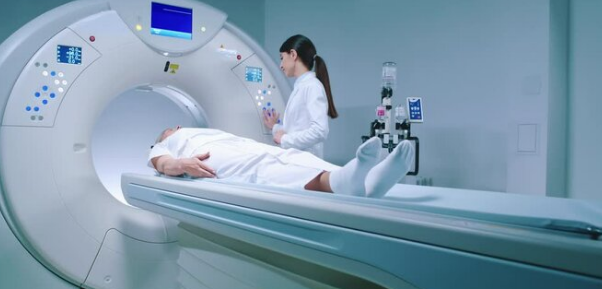Magnetic Resonance Imaging (MRI) has become one of the most vital tools in modern cancer diagnosis. By producing highly detailed images of organs and tissues, MRI allows doctors to detect tumors early, evaluate cancer progression, and guide treatment decisions. However, while the medical benefits are clear, the financial cost of MRI scans often raises concerns for patients and their families.
In this article, we’ll explore the cost of MRI for cancer diagnosis, the factors that influence pricing, insurance coverage issues, and strategies patients can use to make MRI more affordable.
Why MRI Is Important for Cancer Detection
Unlike traditional X-rays or CT scans, MRI uses powerful magnets and radio waves to create clear, high-resolution images without exposing patients to ionizing radiation. For cancer care, this imaging technique is especially valuable for:
- Detecting tumors in soft tissues (brain, breast, prostate, liver).
- Assessing the size and spread (staging) of cancer.
- Monitoring treatment response.
- Assisting surgeons and radiation oncologists with precise planning.
Given its role in life-saving care, MRI is often non-negotiable for accurate cancer diagnosis. Yet the price tag can be intimidating.
How Much Does an MRI Cost?
The cost of an MRI scan varies widely depending on where you live, whether you have insurance, and what type of MRI is required. On average, patients can expect the following price ranges:
- Without insurance: $1,000 to $5,000 per scan.
- With insurance: Out-of-pocket costs may range from $100 to $1,000, depending on deductibles and copays.
- Specialized MRIs (e.g., breast MRI, functional MRI): Often costlier due to longer scanning times and advanced technology.
It’s important to note that hospital-based MRI scans are usually more expensive than those performed at outpatient imaging centers.
Key Factors That Influence MRI Pricing
Several factors affect the cost of MRI scans for cancer diagnosis:
1. Type of MRI Scan
Different cancers require different MRI techniques. For instance, a full-body MRI costs more than a brain scan. Adding contrast dye for clearer images also increases the price.
2. Location of the Facility
Urban hospitals often charge more than rural centers, while imaging centers typically cost less than major hospitals. Internationally, prices may differ drastically depending on healthcare systems and government subsidies.
3. Insurance Coverage
Insurance plays a huge role in determining out-of-pocket expenses. Some policies cover MRI fully if deemed medically necessary, while others require high copays or deductibles.
4. Radiologist Expertise
Highly specialized radiologists or cancer centers may charge more, reflecting advanced expertise and state-of-the-art equipment.
5. Additional Costs
Patients may also face charges for consultation, image interpretation, or follow-up visits, which add to the overall expense.
Insurance Coverage and Financial Barriers
Does Insurance Cover MRI for Cancer?
Most insurance providers cover MRI scans when ordered for cancer diagnosis or monitoring. However, approval may require:
- Prior authorization from the insurance company.
- Documentation of medical necessity from the physician.
- Out-of-pocket payment for deductibles and coinsurance.
For patients without insurance—or with limited coverage—the cost burden can be overwhelming, leading to delays in diagnosis and treatment.
The Problem of Delayed Care
When patients postpone MRI due to cost, cancers may go undetected until later stages. This not only reduces survival rates but also increases long-term treatment expenses.
Strategies to Make MRI More Affordable
Patients worried about the cost of MRI scans have several options:
1. Compare Imaging Centers
Hospital-based MRIs often cost far more than independent imaging centers. Patients should request quotes from different providers to find lower-cost options.
2. Ask About Payment Plans
Many facilities offer payment plans, allowing patients to spread costs over time instead of paying upfront.
3. Explore Financial Assistance Programs
Nonprofit organizations, hospitals, and cancer support groups sometimes provide financial aid or grants to help patients afford imaging tests.
4. Use Health Savings Accounts (HSA) or Flexible Spending Accounts (FSA)
If available, these accounts allow patients to use pre-tax dollars for MRI expenses.
5. Discuss Alternatives With Doctors
While MRI is often the gold standard, in some cases, CT scans or ultrasounds may provide sufficient diagnostic information at a lower cost.
The Global Picture: MRI Costs Around the World
MRI affordability is not just a problem in the United States. Globally, disparities in cancer imaging access are significant:
- High-income countries: Widespread MRI availability but high out-of-pocket costs for uninsured patients.
- Middle-income countries: Limited MRI access, often concentrated in major cities.
- Low-income countries: Severe shortages of MRI machines, making scans unavailable for many cancer patients.
This global inequality highlights the urgent need for international cooperation and investment in affordable imaging technologies.
Future Trends: Making MRI More Accessible
Technological innovation is driving down the cost of MRI machines and expanding their reach. Some promising developments include:
- Portable MRI devices for use in smaller hospitals and rural clinics.
- AI-assisted imaging to improve efficiency and reduce repeat scans.
- Government-funded cancer care programs aimed at covering diagnostic imaging.
If adopted widely, these advances could make MRI scans more affordable and accessible to patients worldwide.
Conclusion: What Patients Should Keep in Mind
MRI is an essential tool in the fight against cancer, but its high cost remains a barrier for many patients. By understanding what drives MRI pricing, exploring insurance options, and seeking financial assistance, patients can take proactive steps to access this life-saving technology without undue financial stress.
Ultimately, the cost of an MRI should never be the reason someone delays or avoids cancer diagnosis. Early detection saves lives, and healthcare systems must work toward making MRI scans affordable and accessible for all.
Also Read :
